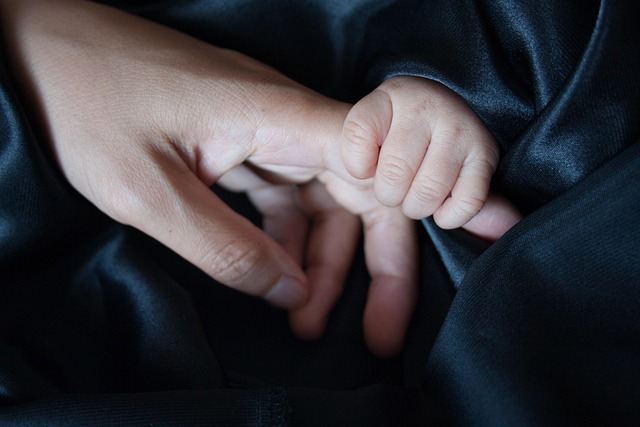Paternity laws in various jurisdictions protect the rights of both parents, promoting shared responsibilities and ensuring children's well-being. These laws cover visitation, child support, decision-making, and custody adjustments based on changing needs. Establishing legal paternity through DNA testing grants fathers recognized duties and privileges in their child's upbringing. Understanding these evolving laws, especially regarding active fatherly involvement, is crucial for fostering positive parenting relationships. The diverse global landscape of paternity laws underscores cultural differences, requiring professionals to navigate a spectrum of parental rights and leave procedures sensitively and equitably.
In today’s diverse society, understanding one’s rights and obligations as a parent is paramount. This comprehensive article offers professional insights into the intricate world of paternity rights and responsibilities, exploring them from a legal perspective. We delve into global variations in paternity laws, highlighting crucial aspects such as parental duties, shared custody, and international comparisons. By navigating these key areas, we empower parents to exercise their rights effectively.
- Understanding Paternity Rights: A Legal Perspective
- The Obligations of Parents: What Does the Law Dictate?
- Navigating Parental Responsibilities: Rights in Action
- Global Comparison: Variations in Paternity Laws Across Countries
Understanding Paternity Rights: A Legal Perspective

In many jurisdictions, paternity rights and obligations are governed by specific paternity laws designed to protect the interests of both parents and children. These laws recognize the significant role that fathers play in their children’s lives and provide a framework for establishing and enforcing their rights and responsibilities. Understanding these legal aspects is crucial for ensuring fair treatment and fostering healthy parent-child relationships.
The scope of paternity rights includes, but is not limited to, visitation privileges, child support obligations, and decision-making authority regarding the child’s upbringing. Paternity laws often mandate that biological fathers undergo DNA testing to establish their parental status, thereby ensuring legal clarity and preventing disputes. Furthermore, these laws may provide mechanisms for modifying custody arrangements and child support payments as the child’s needs or circumstances change over time.
The Obligations of Parents: What Does the Law Dictate?

In many jurisdictions, paternity laws are designed to ensure the well-being and rights of both children and parents. When it comes to obligations, the law dictates that both parents have a legal responsibility to support and care for their child financially and emotionally. This includes providing for their basic needs such as food, shelter, clothing, and medical care. Moreover, paternity laws often mandate shared parenting responsibilities, promoting joint decision-making and regular interaction between the child and both parents.
The specific duties can vary depending on local regulations and individual circumstances. Typically, parents are required to inform official records of their child’s birth and establish legal paternity. This process ensures that the father’s rights and obligations are officially recognized, enabling him to participate in crucial decisions regarding his child’s upbringing and future.
Navigating Parental Responsibilities: Rights in Action

Navigating parental responsibilities is a crucial aspect of understanding one’s rights and duties as a parent, especially under paternity laws. When it comes to men, awareness of their rights in this regard has evolved significantly over time. Traditionally, paternity was largely associated with providing financial support, but modern paternity laws recognize a much broader spectrum of involvement. Today, fathers are increasingly entitled to active participation in their children’s lives, including shared custody and parenting time.
These laws vary by jurisdiction, but many countries have implemented policies that encourage joint parenting responsibilities. This shift reflects the changing societal norms and acknowledges the importance of both parents in a child’s development. As such, it’s vital for fathers to be informed about their rights and actively engage in discussions with mothers regarding custody arrangements, fostering an environment where both parents can contribute positively to their child’s upbringing.
Global Comparison: Variations in Paternity Laws Across Countries

In today’s globalized world, it’s fascinating to observe the diverse landscape of paternity laws across different countries. What may be considered a standard practice in one nation can vary significantly in another, reflecting cultural, historical, and societal differences. For instance, while many Western countries have seen progress in recognizing fathers’ rights and encouraging shared parenting, some Asian and Middle Eastern nations still adhere to more traditional roles, where the mother bears the primary caregiving responsibility.
These variations highlight the need for a nuanced understanding of paternity laws internationally. Factors such as parental leave entitlements, child custody arrangements, and adoption procedures differ widely, influencing how society perceives and supports fathers’ involvement in raising their children. Understanding these global comparisons is essential for professionals navigating family law, fostering cross-cultural sensitivity, and advocating for equitable parental rights worldwide.
Paternity rights and obligations are complex legal issues that vary across jurisdictions. Understanding these dynamics, as explored in this article through topics like the legal perspective of paternity rights, parental obligations, and global comparisons of paternity laws, is crucial for ensuring fair treatment and responsible parenting. By delving into these aspects, we can navigate the complexities of modern family structures and foster a more informed approach to parental responsibilities, ultimately enhancing the well-being of children and families worldwide.
